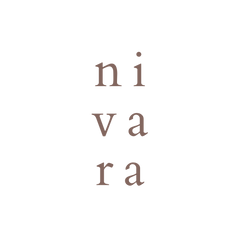When it comes to diamonds, their shape is more than just a design choice because it’s an expression of personality, style, and the love story it represents. But did you know that the shape of a diamond also plays a significant role in its price? Beyond its glint and fire, a diamond's shape can hold an emotional connotation and dictate its value. Let's look into how the diamond's shape influences its price in ways that are as symbolic as they are practical.
-
The shape speaks of emotion
The first thing you notice about a diamond is its shape. Because that’s what captures the heart at first sight. Whether it's the timeless round cut, the regal emerald cut, or the romantic heart shape, each shape tells a story. This emotional appeal plays a big part in determining demand which in turn, influences the price.
For example:
- Round diamonds are universally loved. They express a touch of classic elegance and are the most popular choice for rings in engagements, which means everlasting love. Due to such popularity, they become the costliest shape as they're always in demand.
- Heart-shaped diamonds evoke romance and individuality. Even though they are less frequently chosen as an engagement ring, their symbolism makes them very valuable for a person who wants something different.
-
The rarity of the shape
There are diamond shapes that take longer to craft. The price of these is therefore higher. Shapes such as marquise or pear take lengthy work when having the elongated symmetrical designs created. A slight mistake in cutting ruins the symmetry and therefore costs more to make.
On the other hand, types of shapes such as princess or oval make fuller use of the rough diamond so that there is less wastage. This often makes them slightly more affordable, although they do offer fantastic sparkle and versatility.
-
How size plays a role?
Some shapes can create an illusion of size when the diamond appears larger than it actually is, which can be a big emotional and financial pull. For instance:
- Oval and marquise-shaped diamonds seem generally to appear larger for the same carat weight because they have an elongated look.
- Round diamonds, even if brilliant, have the appearance of being smaller due to the same carat weight since much of the diamond is below the surface.
This perceived size difference can influence price. Those shapes that resemble a larger silhouette are often perceived to be more for the money and thus may command a premium price.
-
Personal Style and Sentiment
Your choice of diamond shape is not just about the price. It's about what speaks to you or what you want to say to the person you are buying it for. Cushion cut diamonds with their softly rounded, pillow-like edges often evoke a vintage charm and warmth. Emerald cuts appeal to those who like the finesse and clarity. Their clean lines and step facets make those shapes appealing. And, round diamonds are classic and endlessly sparkling, hence suitable for any whose tastes are timeless. This emotional bond to a specific shape may justify the price for many buyers because the sentiments are more important than the price tag.
-
Demand shapes the market
The more a diamond shape is in fashion, the greater the price. For many years, round diamonds have been the most widely used for engagement rings. In fact, they are so hot that their cost has been inflated by demand. Trends are changing and unique shapes like pear, oval and Cushion are in greater demand nowadays among younger brides-to-be. This shifting demand makes these shapes more competitively priced on the basis of the current scenario.
-
Symbolism of Meaning
The meaning attached to certain shapes can sometimes affect their allure and their price. For example:
- Heart-shaped diamonds: An undeniable symbol of love and passion.
- Marquise diamonds: Originally designed to mimic a lover's smile, they were indeed associated with royalty and grandeur.
- Oval diamonds: The eternity shape with no beginning or end; it has special emotional value for couples.
These additional levels of meaning can affect how much a person is willing to pay for a given shape.
-
Practical considerations that touch the heart
Even though price is one of the driving factors, emotional and practical reasons for choosing one shape over another often come first. It is based on how it sits on the hand, whether it suits an active lifestyle or otherwise, and how it complements a person's style.
For example:
- A round diamond seems perfect for those interested in tradition.
- A princess cut might attract one who is bold and modern.
- A pear-shaped diamond representing a teardrop may signify both joy and beauty of emotion.
In short, while the diamond shape undoubtedly influences its price, it’s not just about numbers but about what the diamond means to you. The shape you choose reflects your story, your emotions, and your vision of beauty. So, while you are searching through various shapes, forget the price. Instead, consider the thoughts that come to mind and how they reflect your journey. Remember that a diamond's price is not just because of its brilliance, but because of the love and memories it represents.




Leave a comment